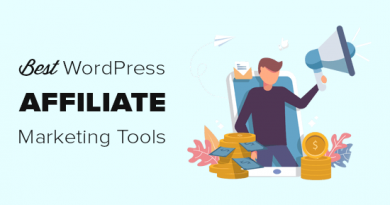24 Email Marketing Best Practices Tips for 2020

Strategy and Preperation
Chapter 2
↓
Chapter 2
Email marketing strategy and preperation
These are the steps to get started:
Step 1
If you’re not sure what from name performs best, perform an AB test!
Find out how
Step 3
Don’t forget about providing a compelling CTA.
Step 4
Remember, this is a legal requirement, not an optional recommendation.
Step 5
You are required to provide this information in all of your emails.
Step 6
Don’t forget to show your appreciation to your users.
When you do make an inevitable mistake (nobody is perfect), it’s a good idea to have a plan for when things go wrong. An apology email may be an appropriate response and, when executed correctly, maintains trust with your users (and it will even help humanize your brand)
4. Choose meaningful metrics to track and measure against
Open rates, click-through, click-to-open, and….so. Many. Metrics. Take a breath; it doesn’t have to be complicated.
To determine what metrics are best to monitor, first determine the purpose of your email. For example:
- If you want recipients to read an important update to your terms of service (and the content is directly in your email), provide a compelling and urgent subject line and measure your opens.
- If you want to extend an offer or discount, clicks (and subsequent visits and conversions from your offer) are your main metric to watch.
5. Personalize your emails
Personalization isn’t necessarily new for 2020, but it keeps picking up steam and becoming increasingly important for email programs. Batch and blast emails just aren’t going to cut it or result in high conversion and engagement rates.
To personalize your emails, you must first consider what user data you have.
Best Practice Tip:
Try to focus on behavior whenever you can
Expand to Read More ↓
6. Have a plan for the holidays
It’s the jolliest–and, unfortunately, spammiest–time of the year. Subscribers are already expecting increased promotion and deals leading up to the holiday season, but it’s still important to remain mindful and courteous about your sending so you don’t end up overwhelming your users.

Our delivery experts recommend modifying your preference centers during the holiday season to include a checkbox that asks your subscribers if they’d like to opt into holiday email communications. This helps properly set expectations with your recipients while helping you tailor your holiday email content.
For other holiday email hacks, listen in on our webinar with some of our delivery team members. Take our quiz below to see if you’re ready to send for the upcoming holiday season!
7. Quality beats frequency (always)
Email marketing can be a powerful tool for digital communication, but that doesn’t mean that ramping up your email frequency will make your message more effective.
In fact, sending too many emails to your recipients will likely achieve the opposite result. Recipients may unsubscribe if they feel overwhelmed by your communication, or worse they may even decide to mark your email as spam.
Start slow, and test how your audience responds to your email sending frequency. Learn more about fighting email fatigue.
8. Nail your timing
Figuring out the perfect time to send your email is a hot topic. And while we don’t have the silver bullet answer for you, we do have some advice and insight.
Based on our tests, we found that for our Twilio SendGrid marketing emails, Tuesdays were a good day for our recipients to engage. Test this day in your program and if you see success, continue to do so.
Also, consider sending your emails on “off” times, i.e. not on the top of the hour. So for example, send your newsletters at 10:07 am instead of 10 am. Sending at the top of the hour increases the chance that your emails will be delayed and not reach your recipient when you originally intended.
9. Reward your VIPs
Your VIP recipients are your biggest brand ambassadors. Subscribers who always open and click (and maybe even share!) your email deserve a little extra attention for their loyalty and engagement. Plus, you can glean valuable information from your VIPs.
Have a new email template or call to action you’d like to try out? It’s a good idea to start with your VIP recipients first. Survey your VIPs to see how you can improve your email program (or highlight what you’re doing right), and be sure to reward them with special offers and discounts. Reward and retain them and you’ll both notice the benefits.
10. Review your landing pages
Designing and writing copy for your email campaigns will require a good chunk of your time. But also consider where you are sending your recipients.
Send your recipients to landing pages that make sense based on your goals and email copy and that provides a seamless transition. For example, if you want to direct them to a certain product, send them to the landing page for that product, not your homepage or product line homepage.
Your Email List
Chapter 3
↓
Chapter 3
Your Email List
12. Segment your email list
Email marketing (much like direct marketing) used to be more of a “batch and blast” communication—everyone gets the same message at the same time. These days, you’ll experience higher engagement if you cater your messages to specific characteristics that you know about your customers.
You could segment your email streams according to factors such as:
- What did they purchase lately?
- Where do they live?
- What time are they opening any of your other (transactional, for example) mail?
The more you cater your messages to your subscribers’ tastes, interests, activities, etc., the more likely you are to reach and resonate with your recipients.
Check out our Segmentation Guide to perfect your process.
13. Don’t take unsubscribes personally
At some point in your email campaigns, even if they once opted into your emails, some recipients may not want to hear from you anymore. That’s ok (and a natural part of the email lifecycle), as long as you have a stable unsubscribe system in place for these users.
The ability to unsubscribe from your email program should never be confusing, should be available in one click, and finally, should be instantaneous.
And no matter what, don’t make your users have to log into any sort of account to unsubscribe from emails. Remember: If users can’t find the unsubscribe, they CAN find the SPAM button.
14. Clean your list on a regular basis
Although some people will take the time to unsubscribe themselves if they aren’t interested in opening your emails, many will just ignore your emails indefinitely. This can be harmful for your delivery rates and also signals to ISPs that you may not be sending wanted email.
To address this issue, carve out some time each quarter to remove unengaged subscribers from your email list. If they haven’t opened your email in a couple months, you can feel safe removing them.
For a deeper dive into how to effectively remove unengaged recipients, check out Email List Hygiene: 5 Tips to Keep Your List Clean.
Email Components
Chapter 4
↓
Chapter 4
Email Components
17. Adapt your copywriting for email
Whether you dread or look forward to writing email copy, there are a few high-level pointers that will help you craft engaging copy efficiently and consistently:
These are the steps to get started:
Step 1
Take a step back and ensure that you (and all stakeholders) are working off a strong foundation and understanding of your voice. Bonus: this agreement will help guide you craft copy across various campaigns beyond just email.
Step 2
The best way to connect with your audience is to write to them on a conversational level. Imagine you’re at the bar with your audience and write to them in a similar fashion.
Step 3
Each email copy component serves a specific purpose (ultimately to persuade the reader to continue reading to the next copy element). As you start to plan our email copy, think about how every piece from your subject lien to your CTA fit together.
Step 4
Your brand voice is a lot like your email sender reputation. Once it’s gone, it’s hard to get back. This gets easier the more you practice.
Step 5
The first edit should review how the pieces work together and whether the email is persuasive, warm, and engaging. This is a great time to ensure that piece like the subject line still fits with the entire email.
Step 6
Although you don’t want to make any drastic changes to your voice and tone, measure your copywriting performance by conducting small A/B tests (second vs. third person for example) and using the winning results in your future email.
For a deeper dive into email copywriting best practices, check out Awesome Email Copy: A How-To.
18. Stop using no-reply from names
Curious about what to put as your from name? At the very least, remove the no-reply response (e.g. “[email protected]”). Sending an email with a no-reply stifles the impression of having a 1:1 conversation in your email messaging, and is just generally unfriendly.
You may or may not want to use a personal name or company, but the only way to know for sure what will work best for you is to test to see what segment receives the most opens.
19. Send a stellar welcome email
It may seem obvious, but give your new subscribers a warm welcome! Welcome emails give you an opportunity to say “hello,” re-introduce yourself, and set expectations for what kind of email your recipients will be receiving from you–and how often.
Welcome emails also provide the perfect opportunity to send subscribers to your preference center so they can adjust the frequency and type of email they’ll be receiving from you. Getting started on the right note can make a world of a difference in keeping your subscribers happy.
Take the following quiz before you send your first welcome email series:
Email Deliverability Tips
Chapter 5
↓
Chapter 5
Email Deliverability Tips
20. Make it double opt-in
How do your recipients get onto your email list? There are several ways to do this including single opt-in, double, and pre-confirmed opt-in to name a few. We highly recommend that you use a double opt-in method, that requires recipients to not only click a box on your sign-up page, but to follow a link in your email that double confirm that they meant to do that in the first place.
Read about all the types of opt-in and how to choose the right one.
21. Send at a consistent cadence
Consistent sending volumes are crucial for maintaining a good reputation with ISPs. Sending 100 emails on Monday and then 100,000 on Tuesday sends a mixed signal. Was that 100,000 campaign just a massive spam send? ISPs probably think so.
Breaking up your sending volumes to a consistent level shows ISPs it’s just business as usual (and you’re not a phisher or spammer). If you do end up sending high volumes of mail, make sure you build up your amount gradually (known as warming up a new sending IP)—send too much email at one time and ISPs will likely throttle your emails which can delay delivery time, frustrate your users, and likely cause a decrease in engagement.
If you’re a high-volume sender who sends millions of emails a month, check out our guide specifically for sending large volumes of email.
22. Follow the rules: GDPR
GDPR started to dominate a lot of email marketing conversations in 2018, and this is expected to continue. The General Data Protection Act (GDPR) applies to the processing of data subjects’ personal data by any size of EU or non-EU organization that provides goods or services to the EU or monitors the behavior of EU users. If you send email to European users, it’s critical to understand the law, and know if you need to make any changes to your program.
We’re not replacing legal advice at all, but we do provide a deep dive into the law, implications, and tips for your email program in our GDPR best practice guide. Finally, although GDPR applies to the EU, following the law for everyone is just a good practice for email marketing in general.
23. Know how many IP addresses you need
An IP address is a unique number block that identifies a device using the Internet Protocol (IP) to communicate over a certain network. When it comes to your email, your IP address behavior affects your sender reputation, and how ISPs judge your sending patterns.
Most email service providers (ESPs) provide the option to send email on a shared IP pool or a dedicated IP address. When you’re sending from a dedicated IP address, you are the sole sender and your reputation (and how it affects your deliverability) is yours, and yours alone.
If you’re sending both transactional and marketing email, it’s a good idea to separate those two streams of email. Because transactional email is crucial and requested by your user, don’t risk that delivery by combining it with the reputation of your marketing emails (typically much lower engagement).
How many IPs you add from there will depend on your monthly sending volume. Check out our recommendations on IP addresses based on monthly email activity.
24. Test email rendering every time
There are many ways your email can display depending on your recipient’s browser, inbox provider, and more. But there are tools out there that provide a complete picture of how your emails can render across these options. A couple of tools we use here at SendGrid are Email on Acid and Litmus.
Make sure that browser testing is a part of your pre-send checklist so you can avoid sending emails that don’t render properly. If your recipient can’t see or read your email, they can’t engage, and this can have lasting consequences, especially on your sender reputation.
Takeaways
Chapter 6
↓
Chapter 6




